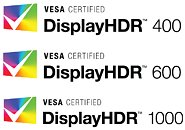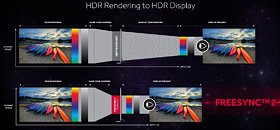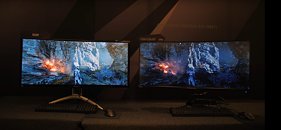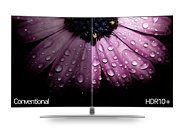
HP Omen X 65 Big Format Gaming Display (BFGD) Pictured
NVIDIA this CES is pushing for a new large-format PC display standard called "Big Format Gaming Display" (BFGD). This is a glorified 4K-HDR living room TV (40-inch and above) that's been tweaked for gaming desktops with G-SYNC-HDR hardware, an NVIDIA Shield in place of the TV's in-built Android-based "Smart TV" OS, and 110-ish ppi pixel-density of conventional monitors, so no software-based HiDPI scaling is necessary. The logic behind BFGD is either more desktop immersion, or better quality living-room gaming.
HP showed off the HP Omen X 65, a massive 65-inchtelevision monitor with 4K Ultra HD resolution, support for HDR10 (1,000 nits brightness), 120 Hz maximum refresh-rate, support for NVIDIA G-SYNC HDR, and an in-built NVIDIA Shield, which you can use for on-demand content, game-streaming from your main gaming rig in another room, or even casual gaming from the Shield library. Somebody forgot to pack its power-brick. Thankfully, any ATX PSU can put out 12 VDC, and the booth staff improvised. Since NVIDIA is targeting this device at serious gamers, expect the Omen X 65 to cost a pretty penny more than that 65-inch 4K HDR TV you probably bought last Black Friday.
HP showed off the HP Omen X 65, a massive 65-inch































































